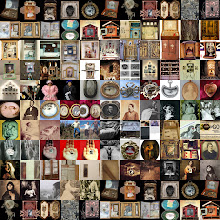 Invisible Creature, Bleeding Through
Invisible Creature, Bleeding ThroughA few artists caught my eye from Black Magic/White Noise (Klanten, Hellige, Ehmann, 2007) which analyses the influence of gothic horror in art, photography and illustration.
The aperture of the body is exploited as shockingly disturbing, within images of the horrific. The photographic language in this images works best as referencing the real. It makes the impossible true, the insides seen. Our worst nightmare comes true in the paradox of the hidden shown.
In Koen Hauser the anatomical order of a plastic model prooves dreadfully artificial and fake, forcing the realisation of our unconscious knowledge: we don't really know our insides. We don't and we can't access them/us-because this prohibited access entails death (literal death of the opened corpse and metaphorical death of the self). Anatomical structures are like euphemisms of the real experience of breaking into our insides, that attempt to sooth with order, function and meaning. Realising that they are a mask produces fear of encountering the real, the irrational chaos in which the self dissolves in the opening of the body-as-limit-of-the-self. Confronting thus a reference of the real body and of the anatomical model wakes the awareness of the artifice, making it fail and turn perverse and confrontational.
In Bleeding Through the impossibility of visualizing a living human means that forcing this vision brings horrors of decay and anhilation, the inside is nothing, and death. The outside form of the body becomes the structure that holds us, and once profaned our soul looses it's temple, darkness engulfs.
I love the tool in Erwin Olaf's Royal Blood, which makes the image more raw and brute. Tools hold the potential to transgress the vital limit of the skin and sometimes seem to hold that inherent violence within them...




